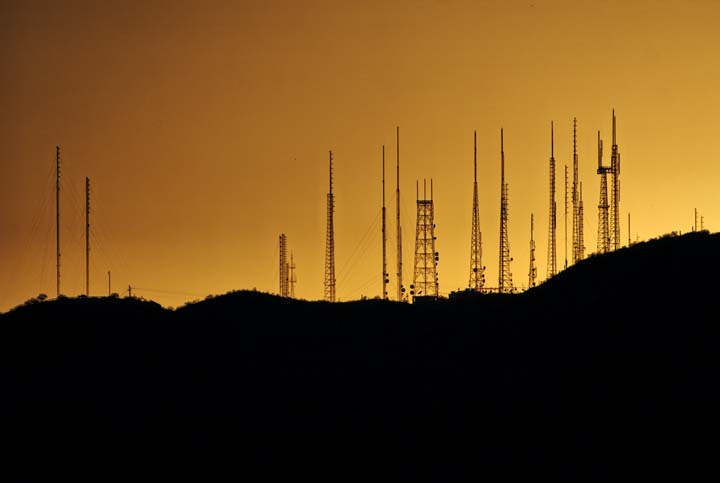What is IoT
The Internet of Things or ‘IoT’ makes the fabric of our daily lives smarter and more open; the integrating the virtual and physical worlds. It’s comprised of billions of devices connected worldwide by networks – typically the internet – for the processing and exchange of data. Technically, the term ‘IoT’ includes anything connected to the Internet, but the term is increasingly used to specify devices that communicate with each other that previously weren’t part of traditional IT. Smart locks, electric toothbrushes, and dog water bowls are just a few of the previously “dumb dsevices” that can now be connected to the web as part of the Internet of Things, and provide insights or automations that previously weren’t possible. Unlocking your door and turning on your porch light as you pull into the driveway, knowing the frequency, duration, and angle of your teeth-cleaning practices as well as exactly when to replace the brush heads, and to ensure Rover is staying well hydrated may seem somewhat trivial, but by allowing these processes to evolve, we, as humans, regain time and perform our daily tasks better. And this type of advantage isn’t limited to household chores.
How IoT Came to Be
In 1999, Kevin Ashton devised the term ‘Internet of Things,’ but at that stage the idea for the state we’re now entering wasn’t far from science fiction – the technological basis for IoT just didn’t yet exist. While Ashton was the first to coin ‘the internet of things’, since the 1970s, the concept of connected computers has been around under the monikers ‘ubiquitous computing’ (or ‘ubicomp’) ‘embedded internet’ ‘and’ ‘pervasive computing’. Yet development was slow. And aside from some early projects like several Proof-of-Concept projects such as the Coke machine at Carnegie Mellon University in the early 1980s, the lack of technical resources hamstrung any practical applications; compute power and scale, and a sophisticated network upon which to rest were embryonic at best.
The Challenges
Close to what Gordon Moore projected, we have seen the emergence of increasingly powerful compute power along with the shrink in size. This has seen computers go from entire building wings to something that can fit in our pockets, and even (much, much) smaller. Coupled with the explosion of the internet and the dramatic increases in speed, we are largely no longer limited by what can have computational power and a network connection. And as with many markers of progress, this has seen an explosion in market offerings. And while this offers huge opportunities for the individual as well as the human collective, there are of course, less positive implications that must be considered.
For decades now, we have seen the problems of legacy IT assets left online past their operational use inside organisations and the very real risks that they present. These systems are forgotten and often remain unpatched, let alone decommissioned, providing a vector for attacks.
When we look at the sheer numbers of IoT devices being created and connected every day, we are already getting a sense of the ‘connected pollution’ we will soon face with the oceans of IoT devices released. Yes, there is certainly the literal ‘pollution’ of short lifecycle devices largely made of plastics and containing dangerous compounds being discarded, but there’s also the significant security nightmare created by forgotten connected IoT devices; devices which are not only significantly more in number, but inherently more difficult to secure due to their physical and logical limitations. From the individual household, to the Internet of Things in the workplace, IoT devices are a potential security timebomb. Even US intelligence community briefings have warned that threat-actors currently pose a threat to both critical infrastructure (often controlled by SCADA, a sort of IoT ancestor in many ways, or Industrial IoT, IIoT) as well as the broader ecosystem of connected consumer and industrial devices known as the Internet of Things.
The Current State of IoT
Individual Applications
Most people are intimately familiar with IoT for their personal use. Devices like Amazon’s Alexa, Siri from Apple, and the Google Home & Nest series are the basis for entry-level IoT ecosystems. They can control temperature, door locks, lighting, order groceries, monitor new-borns, make coffee, take a memo, send a message, or play requested songs or movies – just generally make daily existence smoother. These additions are welcomed by most, though there are very public discussions about privacy implications, and the security of user data. While these opportunities and challenges are absolutely significant, the changes that will likely have the most pronounced impact as a whole will be on the organisational side rather than the private.
Industrial Use
Since as far back as the 1950’s we have seen proto-examples of a SCADA (Supervisory Control And Data Acquisition) framework, with implementations comparable to the ‘modern’ incarnations seen from the early 1970’s. The purpose of SCADA is to provide automated monitoring and activity through the networking of embedded processors designed to exchange data, and a central control mechanism – the ‘Manager’ or ‘Monitoring System’ – for pooling this data and providing insights and instructions either manually or through predetermined responses. As computing power developed over subsequent decades, so too has SCADA performance. If that seems familiar, it obviously sounds very much like IoT. And while SCADA remains deployed across critical infrastructure and manufacturing, many use cases where it previously would have been implemented have seen IoT take its place. The rationale being that SCADA from Manufacturer A. is very unlikely to play well with Manufacturer B. which is anathemic to the purpose of IoT, and be extension IIoT. Coupled with the additional infrastructure costs of any SCADA implementation for storage, licenses, and the (largely by-design) limitations of SCADA data analysis and insight, the shortcomings become abundantly clear.
IoT technology deployed in a business setting has been given several names over recent years; Industry 4.0, the Fourth Industrial Revolution, and last but not least, the Industrial Internet of Things (IIoT) which seems to have become the defacto. And while the fundamental notions common to domestic IoT are present, that of sensors, wireless networking, and the federation of data, their mere application for industrial processes sees a major shift in the degree and very nature of the opportunities, and indeed, the challenges faced. And it’s this insight-rich, more scalable, and more modular approach that makes IIoT the natural successor (and extension) to many erstwhile SCADA deployments.
There’s a feedback process that occurs over IIoT networks. The data that IIoT devices produce is passed back to control making and analysis engines to improve processing and future instructions that will be issued.
This flow of new data based on real-world metrics from these devices means that organisations have more insight to their deployed operational products as well as the performance of their established systems and processes. This additional data leads to significant increases in efficiencies and agility as organisations are able to modify their configurations and processes.
In this, manufacturers have recognised the interest and increasing expectations organisations have for products to provide data to enrich automation capabilities and even human decision-making. This ‘new’ data from more sophisticated sensors can help improve supply chain and other operating efficiencies, and even from a safety & up-time perspective, can prevent damages or safety issues stemming from malfunctions. CyAmast’s solution for example, identifies anomalous behaviours before any otherwise visible failures, meaning a simple and safe replacement preventing damage or more catastrophic complications.
We’ve seen headline-grabbing articles covering the manufacturing of Airbus where their assembly lines identify robotics and allied systems for predictive maintenance based on their performance and subtle cues at degrees unregistrable for human identification. We’ve seen the ‘store of the future’ where Amazon has embraced IoT to remove much of the human effort – including patrons and employees – from the retail experience as well as enhancing their warehousing and distribution capabilities. Perhaps most notably, we’ve seen that most human of endeavours, the growing of our very sustenance through farming, further enhanced and arguably replaced, by autonomous farming machinery by John Deere. Each of these applications has led to the reduced need for human effort and improved performance (mostly) regardless.
What do these augmentations and more considerable changes mean for business? When purely digital potentialities meet real-world commercial concerns, McKinsey has been doing very well assessing the potential of the Internet of Things. From such resource-intensive efforts as off-shore drilling, to actual energy production and consumption, IIoT can help reduce the energy and time, and thus overall environmental impact of such activities. Applications as simple as adding sensors and network technology to healthcare devices is already vastly improving patient outcomes that can be achieved and culminating in reduced waiting times and overall lower mortality rates by incorporating data from IIoT. Simply put, IIoT is changing everything from consumer behaviours, to industrial processes, through to the genesis of entirely new models for businesses.
You’ve likely seen some of the footage from organisations like Boston Dynamics featuring semi-autonomous robots. While this invariably leads to doomsday scenarios with some shouting warnings about the ironically christened ‘Skynet’ from the rooftops, there is a place for IoT to reduce human casualties in military scenarios. While removing people from the frontline of combat seems counter-intuitive to more humane outcomes, greater battlefield intelligence from reconnaissance and surveillance can help mitigate collateral damage. Human error is overwhelmingly the cause of many otherwise unnecessary deaths and injuries. So while we may hesitate to hand over the reigns, similarities between these applications and the likes of Tesla’s Autopilot functions are warranted, and likely will result in a similar level of reduction in casualties. And yes, there are criteria that need to be met to ensure human safety,
Number of Devices
The number of IoT devices is increasing seemingly exponentially. There will be an estimated 65 billion devices by 2025, and that’s conservative according to many. Further, the overall value of IoT is projected to reach nearly $10 trillion by the same year. This staggering level of growth warrants examination more closely on its own merits, but the critical nature of many deployment-types we’ve touched upon previously motivates even closer scrutiny; a larger volume of adoption naturally equates to a comparably larger volume of challenges of which we must be aware.


